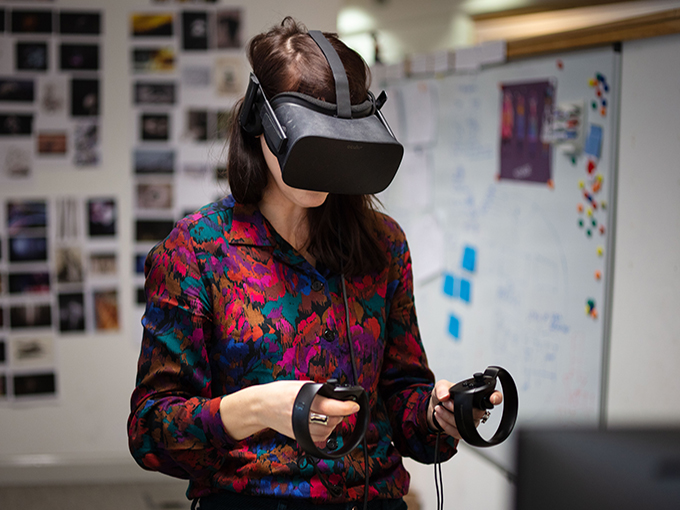It’s strange that in 2019 we’re not all playing games on headsets or via a microchip embedded in our brains, like so many movies made us all believe would happen. Actually, gaming in general has progressed a lot more slowly than everyone in the ’80s thought it would. (Marty McFly, you disappointed us.) That’s not to say that developers haven’t tried—just think of 2013′s Google Glass, and how the techco claimed everyone would be walking around with goggles within a decade. Or look at VR, which continues to fight for relevance with the masses, even as its adoption remains niche.
To entice users away from the cotton candy of gaming (sugary, sweet, not a lot of substance) Google created Stadia, a subscription-based cloud gaming service. The 4K-streaming paltform will launch in November, the tech giant says.
Microsoft, meanwhile, is diving into the interactive and eSports space with Mixer, a video game live-streaming site. It recently lured the internet’s most-watched streamer, Tyler “Ninja” Blevins, away from Amazon’s Twitch, where he was the first (and only) star to hit 10 million followers.
Not to be left behind, Apple—arguably the primary purveyor behind the free-to-play movement—is rolling out Apple Arcade in fall 2019. The aim of the service, which will launch in 150 countries, is to bring ad-free subscription gaming to the casual user and meet them where they’re already playing with exclusive original titles from the likes of LEGO, Cartoon Network and Disney.
But with all of these new pathways opening up, no one is quite clear yet what will take off, particularly with kids. So companies are putting their eggs in different baskets to see what approach draws young players in and expands their brands to keep ahead of the competition.
This week, we’re looking at different company’s video game strategies. Yesterday we dove into Cartoon Network’s virtual reality plans and today we’re spotlighting Aardman.
British animation studio Aardman is investing in a future for gaming where the divide between the player and the spectator is even less clear—a truly immersive experience for all involved.
Dan Efergan, creative director at Aardman Interactive, says he noticed this growing trend while watching Twitch: A player announced he was going to push objects up a hill in Grand Theft Auto and asked the audience to help him. Thousands of people logged on to play live and help complete his task, while others watched the stream and chimed in though a live chat to offer their suggestions.
“It was a realization of how porous the distance between watching and playing was getting,” says Efergan. “For Aardman, in particular, it’s very much something that we’re considering because we think the blur between these platforms and the ways people interact with media is getting greater and greater.”
Next year, the studio plans to launch Wallace & Gromit: The Big Fix-Up, an AR activation set within the studio’s hometown of Bristol. It’s a story-based game where users can watch and interact with the narrative as it unfolds and shifts over time.
Similar to Pokémon Go, users react to different locations and landmarks, where they will be asked to help Wallace and Gromit with a particular peril they’ve found themselves in.
“It’s a combination of using the elements of gaming, storytelling and the physicality of a city to its best advantage,” says Efergan.
Now, he is searching for ways the studio can blend storytelling and gaming into one world. Aardman plans on creating an IP using traditional 3D animation (where everything is created and then rendered down to a flat image) with video game animation. The property would be built in a game engine (a software-development environment designed for people to build video games that can be used to construct games for consoles, mobile devices or PCs), which would allow the show to be created alongside gameplay. Think of it like a game of Fortnite, with a portion scripted ahead of time playing out, while other users continue regular gameplay—kind of like becoming an extra in an animated show.
Check in tomorrow for part three of our breakdown on the future of gaming and to learn why Nickelodeon is focusing on subscription services.























